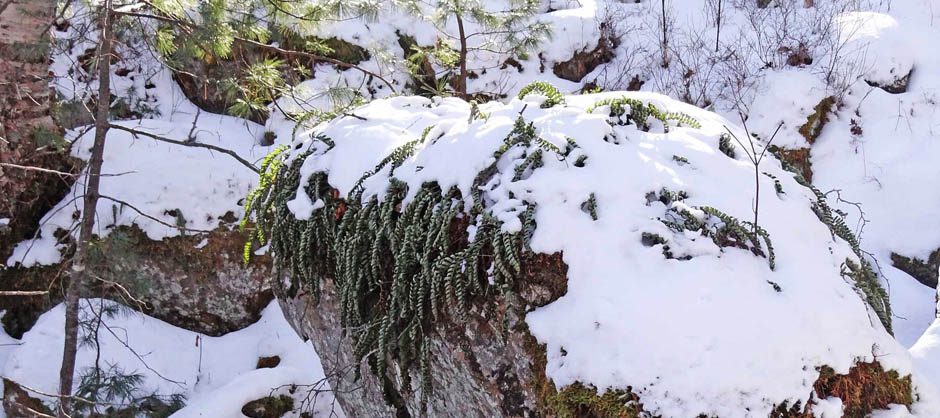‘Workin on it
|
Related pages on this website Exotic & Invasive Plants
|
IDENTIFICATION & ECOLOGY
Knotweed
– Japanese Knotweed
Cornell Weed Identification. ” Japanese Knotweed (Reynoutria japonica) is an invasive weed….There are several very similar large knotweed species, which are alike in aggressiveness, spread, and management. In New York, these include giant knotweed (Reynoutria sachalinensis) and the hybrid between giant and Japanese knotweed, bohemian knotweed (R. ×bohemica). Here are images of the three species’ flowers and leaves. Practically, all three can be managed similarly.”
– Biology and Biological Control of Knotweed
Fritzi S. Grevstad et al., 2018. Book
– Knotweeds: History and Ecology in North America
Fritzi S. Grevstad et al., 2022 In: R.L. Winston, Ed. Biological Control of Weeds in North America. North American Invasive Species Management Association, Milwaukee, WI. NAISMA-BCW-2022-19-KNOTWEEDS-P
Multiflora Rose
– N.Y. Invasive Species Information: Multiflora Rose
Description of the species, its impacts and how to control it.
IMPACTS OF EXOTIC PLANTS
– Long-term dynamics and impacts of plant invasions
Carla D’Antonio and S. Luke Flory 2017. Journal of Ecology. Introduction to special issue.
– Introduced plants reduce species interactions
Melissa Richard et al.m 2018 in Biological Invasions. View PDF
– Should we care about purple loosestrife? The history of an invasive plant in North America
Claude Lavoie, 2010. Biological Invasions volume 12, pages 1967–1999
– Hill, N.M., and Blaney, C.S. 2009. Exotic and invasive vascular plants of the Atlantic Maritime Ecozone. In Assessment of Species Diversity in the Atlantic Maritime Ecozone. Edited by D.F. McAlpine and I.M. Smith. NRC Research Press, Ottawa, Canada. Pages 1–18
EXOTIC PLANTS AS INDICATORS
– Ground vegetation as an indicator of ecological integrity
Richard LaPaix et al., 2009 “Alien species are considered to be especially valuable indicators of changes in ecological integrity due to their established relationships with anthropogenic stressors, known historical state, relevance to all floristic communities, and ability to cause undesirable changes to biodiversity and ecological processes.”
EXOTIC PLANTS IN WETLANDS
– Exotic invasive species in urban wetlands: environmental correlates and implications for wetland management
Joan G. Ehrenfeld* Journal of Applied Ecology 2008, 45, 1160–1169/ “…The hypotheses were tested that different vegetation strata and different invasive species respond similarly to environmental factors, and that invasion increases with increasing direct human impact, hydrologic disturbance, adjacent residential land use and decreasing wetland area. The hypotheses were only partially supported; invasion does not increase in a simple way with increasing human presence and disturbance…A single
approach to wetland management, such as altering hydrology, reducing nutrient inputs or enhancing native diversity, may enhance population growth of some invasive species while reducing others. ”
– A plant-based index of biological integrity (IBI) for headwater wetlands in central Pennsylvania
Sarah J. Miller et al., 2006. Ecological Indicators 6: 290–312 “Vascular plants are quickly emerging as one of the best indicators of human-mediated disturbances in the environment. We developed a plant-based index of biological integrity (IBI) to evaluate headwater wetland condition in response to anthropogenic disturbances in the Ridge and Valley Physiographic Province of central Pennsylvania. To construct the IBI, we evaluated 50 attributes of the plant community, including species richness, diversity, and evenness. Disturbance was quantified for each site using information on surrounding land use, buffer characteristics, and an assessment of potential site stressors. Ecological dose– response curves were then plotted to evaluate the relationship between each attribute and the disturbance score. Eight attributes showed a consistent and strong response to disturbance and were selected as metrics: adjusted FQAI, % cover of tolerant plant species, % annual species, % non-native species, % invasive species, % trees, % vascular cryptogams, and % cover of Phalaris arundinacea. All metrics were highly and significantly correlated (P < 0.001) with disturbance as were IBI scores.
– Characterizing nonnative plants in wetlands across the conterminous United States
Teresa K. Magee et al., 2020 Environmental Monitoring and Assessment volume 191, Article number: 344
– Vascular Plant Diversity of Forested Wetlands in Southern New England
Laura Green & Marlyse Duguid Rhodora (2020) 122 (990): 73–101. “…Despite similarities in soils, landscape position, and land use history, sites varied significantly from each other in canopy and understory composition. We found that the site-specific nature of wetland plant assemblages overwhelms commonalities between sites. Inventories of common habitats are important for conservation and management concerned with biodiversity, culturally important species, and game and non-game animals.”
RECREATION & INVASIVES
– Recreational Trails Reduce the Density of Ground-Dwelling Birds in Protected Areas
Bill Thompson, 2015.Environmental Management volume 55, pages1181–1190
– Outdoor Recreation: Environmental Impacts and Management
David Huddart & Tim Stott 2019 Springer (book)
– Sustaining Wildlife With Recreation on Public Lands: A Synthesis of Research Findings, Management Practices, and Research Needs
Anna B. Miller et al., 2020. USDA Book, 240 pages, available free as a PDF/ “…We conducted an extensive literature review and categorized recreational activity into five types based on the use of motorized equipment, season, and location (terrestrial vs. aquatic), expanding on findings summarized in prior reviews. Our findings provide a reference for public lands planners and managers who need information about how wildlife species respond to recreational activities and to associated changes in their habitats. We also describe management principles gleaned from the literature and outline priority research and administrative study areas to advance our understanding of recreation-wildlife interactions.”
